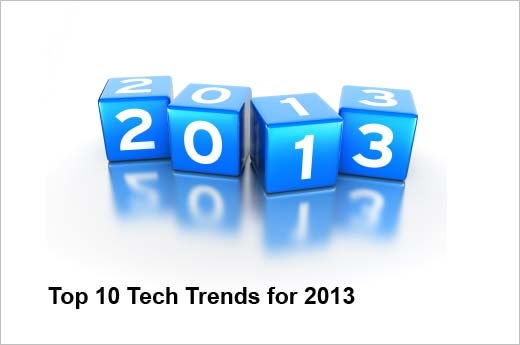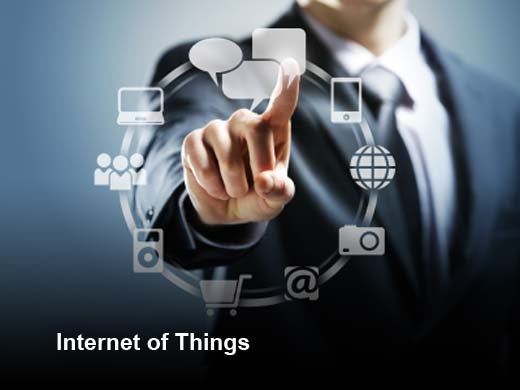Icreon Tech, a global IT services provider, recently released its top 10 predictions for technology trends that are expected to drive innovation and influence decision-making around IT spending in 2013.
“Technological advances that connect the digital and physical world will make 2013 the year of integration,” said Himanshu Sareen, CEO of Icreon Tech. “From the integration of fragmented IT systems to all encompassing smartphones and smart televisions, in 2013, technology will keep the heavy lifting confined to the backend and enable incredible intuitiveness, simplicity and seamlessness for users.”
Click through for the top 10 technology trends of 2013, as identified by Icreon Tech.
Check out the Top 10 Technology Trends for 2014.
In 2013, the physical and digital worlds will fuse. From the RFID tags on a runner’s bib to the real-time camera feed from traffic lights that informs driving routes, the physical world is becoming an information system. Icreon has been working on cutting-edge apps and solutions for 2013 that are using IT to instill everyday “things” and gadgets with a flow of information and an overall sense of intelligence.
Agile has been very popular but may not be applicable to organizations that are not solely focused on software product development and have limited resources to make the investments required to make agile a success. Icreon predicts that a greater number of companies will turn to agile-ish development, which is still iterative and collaborative but requires less ongoing support from the client.
There is no such thing as an IT project; there are only business projects that are enabled by IT. IT professionals are becoming more attentive than ever to business and the role end users play in the ultimate success of the software. 2013 will involve businesses setting aside more time and budget toward intangibles around IT: communication plans, continuous user training and implementation support.
The early days of globalization triggered a mass movement of work eastward. However, as the world truly becomes flat, the trend is less about jobs lost and instead about the new kinds of jobs being created. In 2013, Icreon anticipates the discourse of “offshoring” to be replaced by smarter “redistribution” of labor based on core capabilities and opportunities in market places.
As 2012 comes to a close, consumers are increasingly relying on their smartphones for just about everything. From researching purchasing decisions to mobile commerce, expect to see more brands start to innovate and cater to the needs of mobile audiences, both customers and staff, to allow for more seamless use and integration of smartphones into our daily lives.
With more users working across multiple devices, 2013 will see a move to provide the missing link in today’s computing experience – the ability to pick up the session on a different device in exactly the same place you left off. Innovation will occur behind the scenes, to provide a continuous experience for users across call logs, text messages, notes and activities as they move from laptop to desktop, from tablet to mobiles.
2013 will continue to be a renaissance period for television content, but not because of cable network providers. Television will be increasingly connected to mainstream computing experiences rather than just isolated content-viewing sessions. The app-ification of curated media by innovative firms like Netflix and SnagFilms across devices such as Rokus, Boxees and tablets will further drive content delivery beyond traditional TV.
Past social networks like MySpace, Orkut and Friendster were decimated by Facebook’s domination. Today, however, Facebook’s ubiquity has led to the proliferation of the niche social network. From photo and video sharing on Instagram and Vimeo, to music and theater lovers using Spotify and Playbill Memory Bank. In 2013, expect to see more custom networks that use Facebook’s login mechanism as a gateway to smaller, more focused social networks.
Skeuomorphism, the act of using physical textures, such as stitched leather, for no particular function, has become a principle on how not to design software. With Microsoft’s Windows 8 and Google’s Android operating systems as indicators, in 2013 the user experience of software will be vastly different from years past, with solid colors, clean type and pure UI, avoiding the “noise” that comes with gradients, glossy buttons and flashy banners.
Long crippled by red tape and black box processes, governments have been the place where great data went to die. However, with the adoption of sustainable standards, private enterprises and governments alike will be able to tap into a trove of valuable data to create exciting and technology-forward public services. As an IT partner for state governments, Icreon has witnessed this wave of technology innovation first hand.













